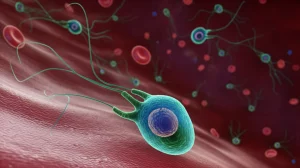Can Antioxidant Vitamins Help Fight Sarcopenia? What Two Big Studies Say
Okay, Let’s Talk About Getting Older… And Our Muscles
Alright, let’s dive into something super relevant as we (or our loved ones) get a bit older: keeping our muscles strong and healthy. You see, there’s this thing called sarcopenia, and it’s basically the progressive loss of muscle mass, strength, and function that often comes with aging. It’s a pretty big deal because it can make everyday tasks harder, increase the risk of falls, and just generally impact quality of life. As the world’s population gets older, sarcopenia is becoming a more common concern.
Now, why does this happen? Well, it’s complicated! Age itself plays a role, sure, but so does how much we move (or don’t move), what we eat, and even getting sick. Finding ways to slow it down or prevent it is a major goal for researchers and health folks.
Antioxidants: The Body’s Cleanup Crew
You’ve probably heard of antioxidants, right? Think of them as tiny heroes in your body, fighting off damage caused by unstable molecules called reactive oxygen species (ROS). This damage, or “oxidative stress,” is thought to contribute to muscle decline as we age. So, it makes sense to wonder if getting enough antioxidants from our diet could help protect our muscles.
Lots of studies have looked at individual antioxidant vitamins – like A, C, E, and carotene – and their link to muscle strength, often measured by handgrip strength. But honestly, the results have been a bit all over the place. Some studies found links, some didn’t, and often the findings differed between men and women. Plus, looking at just one vitamin might not tell the whole story. Foods contain a mix of these beneficial compounds, and maybe their combined effect is what matters most.
Enter the CDAI: A Team Score for Antioxidants
This is where the Composite Dietary Antioxidant Index (CDAI) comes in. It’s essentially a way to give a combined score based on how much of several antioxidant vitamins you’re getting from your diet. It gives us a broader picture of your overall antioxidant intake from these specific nutrients. Until now, nobody had really looked at how this combined score relates directly to the *risk* of actually developing probable sarcopenia.
So, that’s exactly what we set out to do in this study. We wanted to see if a higher CDAI – meaning a higher combined intake of vitamins A, C, E, and carotene from food – was linked to a lower likelihood of probable sarcopenia in older adults. We used data from two massive groups of people: the UK Biobank and the US-based NHANES cohorts. By looking at two different populations, we could see if the findings were consistent.
How We Looked at It
We focused on participants aged 60 and over who had data on their diet and muscle strength. For sarcopenia, we primarily used a definition based on handgrip strength, which is a widely accepted way to screen for probable sarcopenia, especially since measuring muscle mass can be tricky. We calculated the CDAI for each person based on their reported dietary intake of vitamins A, C, E, and carotene (excluding supplements, just focusing on food!).
Then, we used some statistical magic (logistic regression models, if you want to get technical!) to see if there was a connection between their CDAI score and whether they were classified as having probable sarcopenia. We made sure to account for other factors that could influence the results, like age, sex, race, smoking, drinking, physical activity, overall protein and energy intake, and whether they took multivitamins.

What Did We Find? The Good News!
Okay, here’s the exciting part. Across both the UK Biobank and NHANES cohorts, we saw a clear trend: a higher CDAI was significantly associated with a *lower* risk of probable sarcopenia. To put it simply, people who got more of these antioxidant vitamins combined from their diet seemed less likely to have probable sarcopenia.
Looking at the numbers, for every one-unit increase in the CDAI score, the odds of probable sarcopenia decreased by about 2% in the UK Biobank and a more substantial 13.5% in NHANES, after accounting for all those other factors. When we split people into groups based on their CDAI score (from lowest to highest intake), the risk of probable sarcopenia generally went down as the CDAI went up. It wasn’t a perfectly straight line, but the pattern was definitely there, especially in the NHANES data where the lowest antioxidant group had a much higher risk compared to the higher groups.
We also peeked at the individual vitamins, and guess what? Carotene, one of the key players in our CDAI calculation, showed an independent link to lower probable sarcopenia risk in *both* cohorts. This aligns with some previous studies that hinted at carotene being particularly beneficial for muscle strength in older adults.
A Twist: It Might Matter More for Women
Here’s where things got really interesting. When we looked separately at men and women, the inverse association between CDAI and probable sarcopenia risk was significant in females across both cohorts. In males? Not so much. We didn’t see a statistically significant link there, regardless of which sarcopenia definition we used.
Now, we didn’t find a strong statistical interaction indicating that sex *definitely* modifies the effect of CDAI, so we need to be a bit cautious about declaring a definitive sex-specific effect. It could be that the effect is just stronger in women, or maybe there are other factors at play that we couldn’t fully account for. But the pattern was consistent in both the UK and US data – the antioxidant link looked more prominent in the ladies.
We also did some extra checks (sensitivity analyses) to make sure our findings weren’t just due to people taking multivitamin supplements or having other diseases that affect muscles. Even after removing those folks from the UK Biobank data, the main association between higher CDAI and lower probable sarcopenia risk held up. That gives us more confidence in the results.

What Does This All Mean?
So, what’s the big takeaway from all this? Our study, looking at a large number of older adults in two different countries, suggests that getting more antioxidant vitamins (specifically A, C, E, and carotene) from your diet is linked to a lower risk of probable sarcopenia. This is particularly interesting because we looked at the *combined* effect using the CDAI, which gives a more holistic view than just studying one vitamin at a time.
This finding supports the idea that fighting oxidative stress, which these vitamins help with, is important for maintaining muscle health as we age. Think of it like protecting your muscle cells from rust! Carotene, in particular, seemed to be a standout player in this protective effect.
Why might our results differ from some previous studies that looked at individual vitamins or different age groups? Well, focusing on older adults (60+) who are more likely to experience sarcopenia, using the CDAI for a combined antioxidant picture, and defining the outcome as probable sarcopenia risk rather than just grip strength might be key differences. And that potential difference between men and women is fascinating, even if we need more research to fully understand it. It could be related to hormonal differences or how men and women metabolize or utilize these vitamins differently.
Important Caveats (Because Science Isn’t Always Simple!)
Now, let’s be real. This study gives us a strong *association*, but because we looked at data collected at one point in time (it’s cross-sectional), we can’t definitively say that eating more antioxidants *causes* the lower risk. It could be that people with healthier diets overall (including more antioxidants) also have other healthy habits that protect their muscles. We tried to account for many of these, but there might be other factors.
Also, relying on people to remember and report everything they ate isn’t perfect. Dietary questionnaires are useful, but they’re not as precise as, say, measuring vitamin levels in blood (which wasn’t available for everyone in these huge datasets). The way lifestyle factors were asked about also differed slightly between the UK and US studies, which is something to keep in mind.
And that sex difference? While intriguing and consistent across both cohorts, the lack of a statistically significant interaction means we can’t make a super strong claim about it being a true biological difference between men and women based *solely* on this study. It definitely warrants more investigation!

The Bottom Line
So, where does this leave us? Our study adds compelling evidence that a diet rich in antioxidant vitamins – particularly carotene, and the combined power represented by the CDAI – is linked to a lower risk of probable sarcopenia in older adults. This association seems especially noticeable in women. While we need more research to fully understand the “how” and confirm cause-and-effect, these findings certainly reinforce the general advice to eat a varied diet packed with fruits and vegetables, which are fantastic sources of these vitamins.
It highlights the potential for dietary strategies as a way to help maintain muscle health as we age. Future studies could look at this over time (longitudinally) and perhaps delve deeper into the biological reasons behind the observed links, including why there might be differences between the sexes. For now, focusing on getting those antioxidant vitamins from your plate seems like a pretty smart move for supporting your muscles down the road!
Source: Springer







